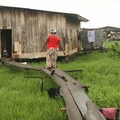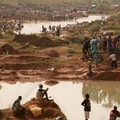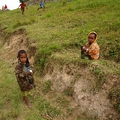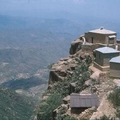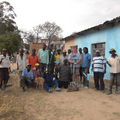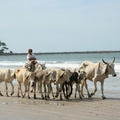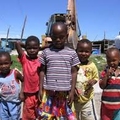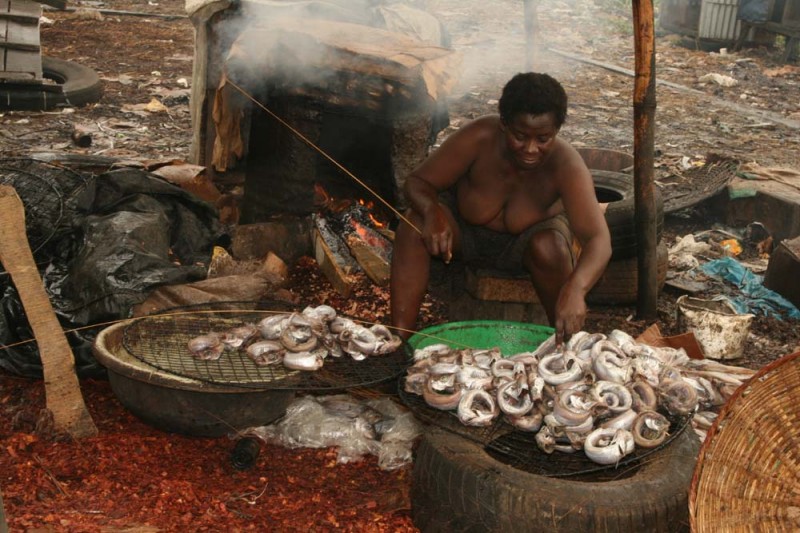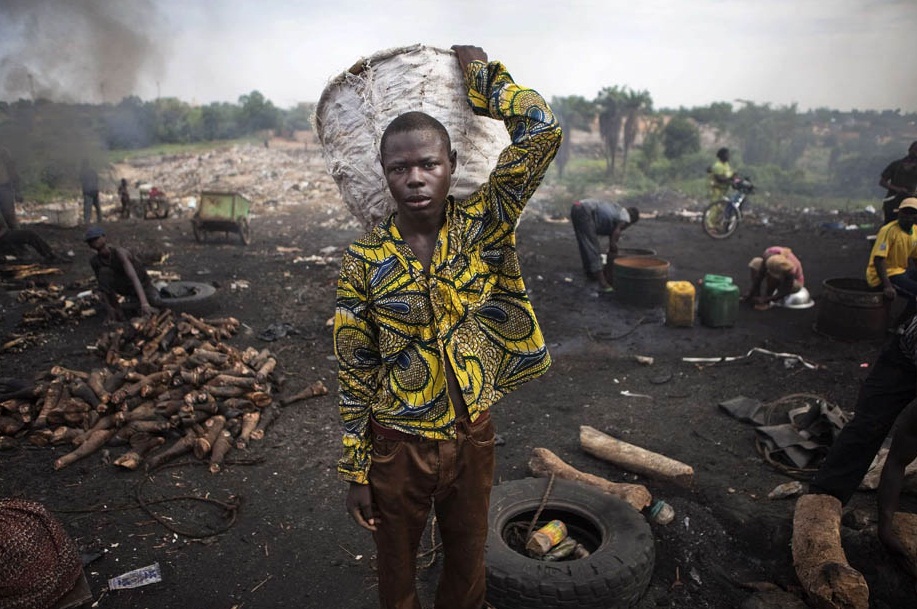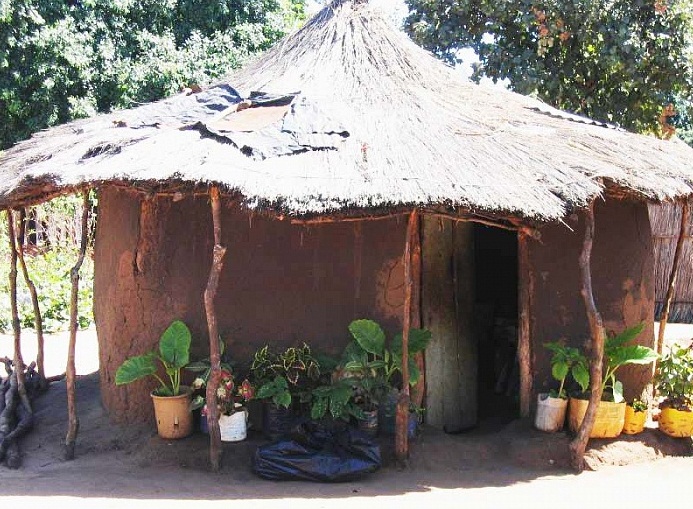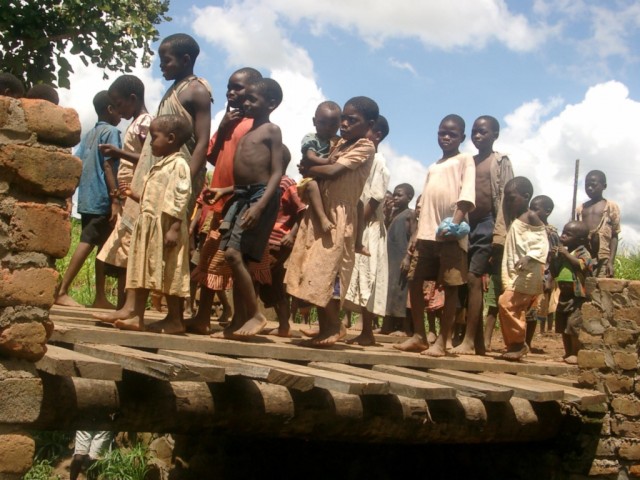Destinations / The Poorest Countries in the World / Nigeria
Nigeria
Developing countries of Sub-Saharan Africa include all countries located in the south of the Sahara, excluding South Africa, the total area of 47 developing countries. Sub-Saharan Africa covers just over 17% of the earth's surface. The population in 1995 was over 540 million people, less than 10% of the world. The countries of Sub-Saharan Africa are mostly small in the territory and the population of the state. Only 15 countries of the population exceeds 10 million. Sub-Saharan Africa was accounted for about 1.5%. This is the least developed part of the world economy. The countries of Sub-Saharan Africa have considerable and varied mineral resources, including ores of ferrous, nonferrous and precious metals and stones. Their geographical distribution is extremely uneven. Thus, 98% of the uranium is concentrated in only three countries (Namibia, Nigeria, Gabon), 92% of copper reserves in two countries (Zambia and Zaire), 78% of chromite in one country (Zimbabwe) and the vast majority of the region's oil reserves are concentrated in one country Nigeria. These circumstances have a significant influence on the socio-economic development of Sub-Saharan Africa, the processes of economic differentiation in the region.
The economic situation in the countries of tropical Africa States is among the most characteristic of the developing world. All of them are former colonies which determined their narrow specialization of agricultural and raw materials in the international division of labor. Thus, the weighted average share of exports of raw materials in the countries of Sub-Saharan Africa is of 76%. The national economies of the region play an important role of the traditional sector. Its main advocate small farms, dominate the natural system productive forces used by natural factors of labor and living labor predominates over materialized. For a typical household extensive nature of industrial activity, in turn leads to a lack of objective conditions for expanded reproduction. In those cases, when using the work of others, the appropriation of the results is often based on the methods of extra-economic coercion. Small farms are occupied most of the rural population. They account for a significant portion of cultivated land. The low level of economic development and social services is another characteristic of the region. The average per capita GNP was in 1995. When calculating the current exchange rates 490 dollars. However, only five countries this figure reached or exceeded $ 2,000. Nine states in the region had in 1995, per capital income less than $ 200, including Ethiopia - $ 100, Mozambique - $ 80. The economic backwardness of the region is indicated by the structure of their GDP. The regional average in the industry creates 30% of GDP, agriculture - 20%. The share of manufacturing GDP is only of 15%.
One of the poorest Sub-Saharan Africa is Nigeria. Nigerian GDP per capital was of 755 dollars . Among adults literate people (only those who read and write) are only 15%. Life expectancy in the country has stagnated at around 46 years. The health care system cannot cope with hepatitis A, meningococcal meningitis, typhoid fever. The unemployment rate : 8%. The financial system is not developed: only 1% of the resident population keeps their money in banks. Agriculture provides employment for more than 72% of the population and 55% of GDP. The country has to import expensive equipment and machinery to export diamonds, cotton, coffee, tobacco. Although Nigeria is one of the poorest countries in the world, it is the largest producer of uranium . The extraction of uranium and its processing are joint ventures, a large proportion of the capital belongs to foreign companies. The annual uranium production in Niger is about three thousand tons, which are supplied mainly to France, Japan and Spain.
Others The Poorest Countries in the World .
Maps of Nigeria
map NigeriaOthers from The Poorest Countries in the World
GDP, literacy rate and employment are the main parameters to determine the level of a country's economy.
According to the report of the United Nations, hunger causes the death of about 25,000 people daily.
Unfortunately, more children die than adults.
982 million of the 4.
8 billion people in the developing world live on $ 1 a day.
Another 2.
5 billion people live on less than $ 2 per day.
What factors influence the level of the economy? These are the geography of the country, industrialization, colonialism, education, natural resources, infrastructure, overcrowding, investment, government debts.
Here is a list of the most-most of the world's poorest countries: There are 9 in Asia: Afghanistan Bangladesh Butane East Timor Yemen Cambodia Laos Myanmar Nepal In Africa 33: Angola Burkina Faso Mali Burundi Benin Chad Sudan CAR Democratic Republic of Congo Ethiopia Niger Djibouti Comoros Somalia Equatorial Guinea Togo Tanzania Uganda Eritrea Madagascar Malawi Guinea-Bissau Lesotho Rwanda Mauritania Mozambique Southern Sudan Sao Tome and Principe Zambia Oceania has 5: Vanuatu Samoa Tuvalu Kiribati Solomon Islands The North America only one: Haiti And 2 of the 4 th in the world: Cape Verde Botswana The world's poorest countries belong to their ratings, so it makes sense to select the top 10 most such, the number of GDP.
This list begins with the very poor and can be a little different: Congo Liberia Zimbabwe Solomon Islands Somalia Comoros Guinea CAR Niger Ethiopia It is known by everybody that the economy is developing in different countries in different ways.
The factors that make compiled rating may be noted by the gross domestic products, by the literacy rate and the percentage of the population of working citizens.
Summing these factors in a special way, without any problems, can determine the level of the development of a region.
Actually it was done.
Based on some worldly reports it becomes clear to us that tens of thousands of people die every day directly from hunger.
By the way, more than half of the world's population spends at least 30 rubles per day.
These indicators are mainly related to poor developing countries of the world, because they are very backward and people do not want to work properly.
In some cases this can be attributed to the nature and the lack of minerals.
Congo is a leader of the poorest state from the economy point of view.
There always were constant wars and chaos.
Liberia has serious problems with the export, losing its diamond resources.
It has a large number of debts and bad lives.
Zimbabwe is not much better than others.
There is most inflation and a small amount of money, as a result, unemployment and related phenomena.
In Solomon Islands, then things are a little better.
In this country there are a lot of fish, so it caught almost all the inhabitants of the country.
From fossils, too, all very good.
However, technological progress, or something else does not allow to live normally.
Somalia is the most militant.
Usually people are engaged in agriculture and cattle breeding.
However, there were many pirates who robbed everyone who came across their path.
However, such a laugh did not improve their lives in general.
Disaster occurred in Comoros because of an increase in population.
The result was a lack of jobs and defaults.
People in Guinea are engaged in agriculture and fishing.
This is the only thing by which they can survive.
As an additional problem may be noted viruses.
Summing up our ranking of the world's poorest places, we tried to make you understand their general backwardness.
In these places, residents never shone with mind and they do not understand anything in modern technologies.
The level of literacy suggests that schools are not the main places to get life skills.
What they wanted got it.
Just do not know how to create good living conditions, then let it grow at least something.
The fact that there are rich and poor countries is known to many.
But ordinary citizens do not realize how poor countries are .
.
.
poor .
The fact that living standards in these countries is poor, often referred to international organizations.
Well, try to find out about the top 10 poorest countries in the world, consisting of ten states.


